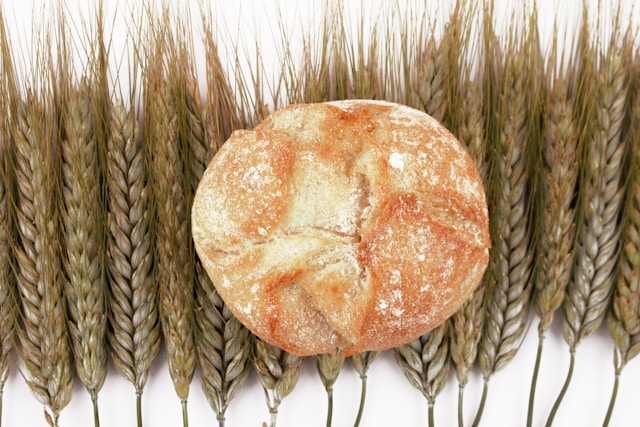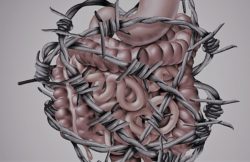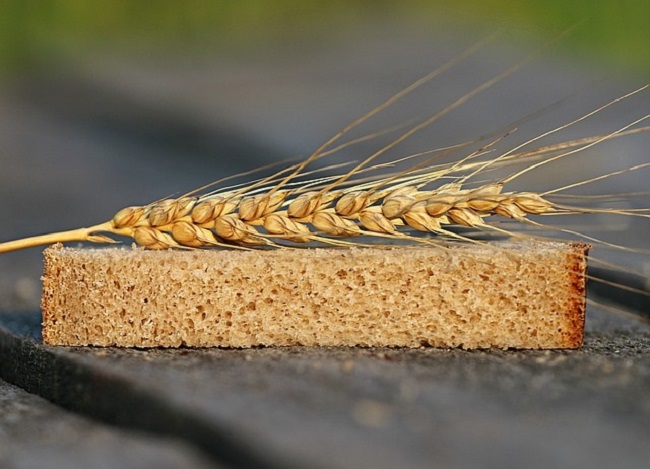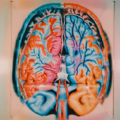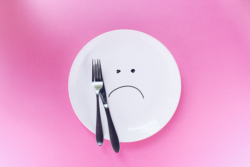Are You Sure You Are Not Gluten Sensitive?
Gluten free is everywhere. I can barely go any place or talk to anyone who is not eating gluten free at least to some degree. Gluten free is really not a very good exchange for harmful gluten because the substances used in baking gluten free foods are very high in insulin spiking simple carbohydrates (carbs). So which evil do you choose if you are not sure about your need to avoid gluten?
I never had any issues with gluten—or at least that is what I thought. All of my tests came back negative, showing no sensitivity at all.
Out of my insatiable curiosity, I went on a grain free diet. I noted that although I was not sensitive to gluten as per the tests, I needed to take Benadryl after eating Farro (can be written with one or two r’s), a wheat product. I also needed Benadryl after couscous, another wheat product, even though I did just fine (I thought) after eating bread or pasta. So I thought why not try; let’s have a test!
It takes minimum 2 months to usually 6 months (1) for your body to show any response to becoming grain free if you are sensitive. Okay, so what’s 2 – 6 months in the life of a person? I cut out all grains. I don’t mean that I went gluten free but I mean that I stopped all grains. Gluten free is a very misused term. For example, having just come back from New Zealand and Australia, I asked everywhere if they had gluten free food. They always served my dish with corn flour instead of wheat. There are two problems with this approach:
- Glycemic index (GI) is always higher for gluten free foods than foods with regular grains if other grains are substituted for gluten-filled grains
- Gluten free does not mean grain free by any means. Gluten free grain may not have gluten but they have other proteins that do equal harm in terms of interfering with protein synthesis and absorption of nutrients.
Understanding Grains When You Go Gluten Free
Did you know that corn flour is also grain? If you eat corn fresh, it is a vegetable. However, when it dries, the chemical processes during drying change its property and corn becomes loaded with harmful proteins. Gluten proteins are gliadin, glutenin, glutamites, prolines. Though corn has no gluten per se, corn has lipid transfer protein, which causes problems. Rice (also a grain) has proteins that are not gluten but can cause gastric distress from their high sulfur content as a result of amino acids, cysteine and methionine. Both rice and corn are grass, and thus grain. Rice has the least amount of harmful effects so eating rice can be nutritious, provided one selects low arsenic content rice with strong colors for higher nutritional benefits and provided that one is not sensitive to sulfur.
Where Gluten Hides
One must also be careful about eating common foods we do not associate with gluten or grain, such as soups, ketchup, soy sauce, salad dressings, prepared meats like hot dogs and sausages, tempura (oh that was painful!), ice creams, many alcohol types since they are made of grain, like beer and vodka, even wine, and many food colorings and additives. There is a list here if you would like to learn more.
To be complete, let us list all grains one needs to consider when going grain free since while corn, rice, oats, and some others are technically gluten free, they are loaded with other elements that block nutrient absorption in the gut and the intestines. I would have liked to write “to sensitive people” but since I showed no sensitivity in any test and yet I clearly was sensitive to grains, I believe that sensitivity goes for all people to some degree. Likely no person on the planet is immune from some damage caused by the seeds of grasses, only most don’t test like I did so they will never know.
The Worst Offenders
The worst of all grains are those that are the seeds of grasses. The immediate ones that everyone knows are wheat, rye, and barley. These are all full of gluten. However, since grains are all seeds of grasses, we need to go further and list them all: wheat, rye, barley, corn, oats, rice, flax seed, finger millet, fonio, foxtail millet, Japanese millet, Job’s tears, kodo millet, millet, pearl millet, proso millet, sorghum, spelt, teff, triticale.
Pseudo cereal grains are really neither grasses nor grains but their names are often misleading. Buckwheat is a pseudo cereal that is not really a wheat in any shape or form and has nothing to do with being a grass—it has no gluten and is not even a true grain. Pseudo grains are: amaranth, buckwheat, chia, and quinoa. These are not grains, have nothing to do with gluten and are totally safe to eat for Celiacs and other gluten sensitive people and also those who do not wish to eat grains. They are not grains with harmful proteins—though they are very high carbs foods with high GI.
There is also another family of foods that is often confused with grains but is, in fact, fine to eat and has no gluten. It is not true grain. This is the family of Pulses (legumes). This family contains chickpeas, common beans, common peas, fava beans, lentils, lima beans, lupins, mung beans, peanuts (yep, peanuts are not nuts!!), pigeon peas, runner beans (green beans in the US), and soybeans.
Seeds may be confused with grain but while they are not grains, they are not very good for you either. They are often used to produce oil so the technical name is “oil grains”. These are: black mustard, India mustard, rapeseed, sunflower seeds, safflower, hemp seed, poppy seed. Oils made from these seeds are unhealthy because 1) they are processed at high temperatures, where these polyunsaturated fatty acid rich fats oxidize and turn rancid, harming you and 2) they are very high in omega 6 fatty acids, which are inflammatory when we consume a lot of them.
Grain Sensitivity
Why is it important for you to test if you are grain sensitive by eliminating grains and see what happens? As noted above, my blood tests showed that I was not sensitive but when eating some wheat products I needed antihistamine. I was clearly sensitive even though no test picked that up.
Grains are harder to give up than sugar. Grains release morphine in the brain and contain a tremendous amount of carbs (1, 2). Since I started by giving up all sugar (sugar substitutes too), I can tell you that giving up sugar is nothing compared to giving up grain. The smell of sugar after being sugar free for 6 months or longer makes me nauseated. The smell of bread never seems to cause the same effect and, in fact, seems to make me crave it more. Bread is the worst case of addiction I have experienced so far.
Thus, one reason you may consider cutting grains out of your life is because of its incredible addiction causing element. However, that on its own is not meaningful if you are not bothered by grains. Here is a short list of the things that transpired during my first 2 months of being grain free and also 6 months sugar free:
- I went completely allergy free both environmental and food (I lived on Zyrtec and had not needed one since I quit grains but still needed it after quitting sugar).
- I had non-alcoholic fatty liver (caused by fructose from sugar since I don’t ever drink alcohol) that completely reversed to healthy liver after stopping grains.
- I was told 5 years ago that I will need a cataract surgery but on my last visit I learned my cataract reversed.
- I lost a few inches around the belly.
- I have asthma that used to send me to ER regularly but no more—it is improving and is barely there.
- My migraines that were already under control using the Stanton Migraine Protocol® became non-existent.
Some other positive things happened without my noticing without help. For example, I used to have arthritic finger joints that were swollen and red. I completely forgot about them until a couple of weeks ago someone in my migraine group complained about that very thing. Then, I looked at my hands and said “wait.. I used to have that”… it is all gone! So arthritic joints are no longer red or swollen. Wow. The changes were so incredible that it is worthy to note the many diseases that are associated with grains. I am copying all these from the Wheat Belly book—referenced below. If you have any of these conditions, please consider a grain quitting test period of 2-6 months and see if you are also sensitive to grains:
Addison’s disease, Alopecia areata, Ankylosing spondylitis, Antiphospholipid antibody syndrome, Autoimmune hemolyctic anemia, autoimmune hepatitis, Autoimmune inner ear disease, Autoimmune lymphoproliferative syndrome, Autoimmune or Idiopathic thrombocytopenic purpura, Behcet’s disease, Bullous pemphioid, Cardiomyopathy, celiac disease, Chronic fatigue syndrome, Chronic inflammatory demyelinating polyneuropathy, Cold agglutinin disease, CREST syndrome, Crohn’s disease, Dermatomyositis, Discoid lupus, Essential mixed Cryoglobulinemia, Food protein-induced enterocolitis syndrome, Grave’s disease, Gullain-Barré syndrome, Hashimoto’s thyroiditis, Idiopathic pulmonary fibrosis, IgA nephropathy, Insulin dependent diabetes (type I), Juvenile arthritis, Ménière’s disease, Mixed connective tissue disease, Multiple Sclerosis, Myasthenia gravis, Myocarditis, Pemphigus vulgaris, Pernicious anemia, Polychondritis, Polyarteritis nodosa, Polyglandular syndromes, Polymyalgia rheumatica, Polymyositis dermatomyisitis, Primary agammaglobulinemia, Primary biliary cirrhosis, Psoriasis, Raynaud’s syndrome, Rheumatoid arthritis, Sarcoidosis, Scleroderma, Sjörgen’s syndrome, Systemic lupus erythematosus, Takayasu’s arteritis, Temporal arteritis, Ulcerative colitis, Uveitis, Vasculitis, Vitiligo, and Wegener’s granulomatosis (1).
In addition, I want to also tell you what happens when you do the grain test, show improvements and wish to stay grain free but for whatever reason, outside of your control, you cannot. I traveled out of the country and could not find any food without grain! The symptoms of eating a half a regular wheat (white or whole) bun requires a bathroom nearby. Although IBS is not on the list above for some reason, since that was the first symptom I got after eating grains, I wish to add irritable bowel syndrome on the list.
I also would like to add anxiety and depression to the list above. Not eating grain removes a huge amount of carbs from your daily diet. A large part of carbs convert to blood sugar (glucose) in your body (even complex carbs do) and sugar is well understood to cause anxiety and likely also depression. Sugar (and therefore carbs) also hurts teens and is likely at least one factor in the type of depression that may cause additional mental diseases (3). Because grains are so high in carbs, their connection to obesity is clear.
I think my message is strong. Do your body a huge favor and stop sugar and stop grains. I tested sugar against grains in my travels (this is not a clinical trial obviously, which would be great to have). While sugar (I ate a gelato and a flan-type very sweet dessert) did absolutely no harm or stomach/intestinal distress, eating half a burger bun that had the delicious cheese burned on it caused me several days of gastrointestinal misery. Hence the two evils, in order of damage to your body: (1) grains and (2) sugar.
I hope you find this information helpful though, without a doubt, overwhelming.
Sources
- Davis W (2014) Wheat Belly Total Health (Rodale, New York, NY).
- Perlmutter D & Loberg K (2014) Grain Brain: The Surprising Truth About Wheat, Carbs, and Sugar – Your Brain’s Silent Killers (Hodder & Stoughton).
- Rao TSS, Asha MR, Ramesh BN, & Rao KSJ (2008) Understanding nutrition, depression and mental illnesses. Indian Journal of Psychiatry 50(2):77-82.
We Need Your Help
More people than ever are reading Hormones Matter, a testament to the need for independent voices in health and medicine. We are not funded and accept limited advertising. Unlike many health sites, we don’t force you to purchase a subscription. We believe health information should be open to all. If you read Hormones Matter, like it, please help support it. Contribute now.
Yes, I would like to support Hormones Matter.
Photo by Marek Studzinski on Unsplash.
This article was published originally on March 9, 2016.
